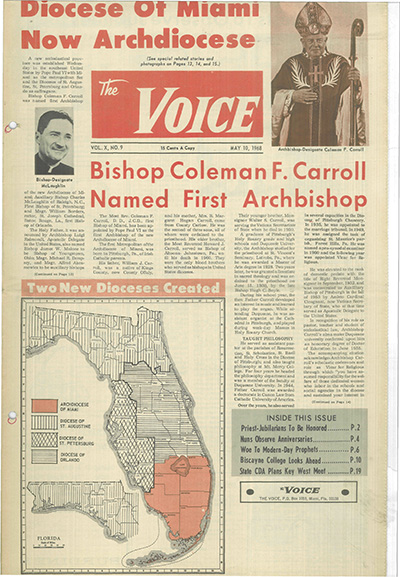By Florida Catholic staff - Florida Catholic
MIAMI | Editor’s note: The following is a new feature highlighting a month in archdiocesan history, as the Miami archdiocese continues its 60th anniversary celebration. A “White Gala to Honor the White Collar” will take place Oct. 20, 2018, with proceeds benefiting the two local seminaries. Here are some of the historical highlights for May. Click on the images to see a digital copy of the newspaper.
1959
� May 24: Bishop Coleman Carroll consecrates the ground on which the first archdiocesan cemetery, Our Lady of Mercy, will be built. It covers 256 acres at N.W. 117 Ave. and 25 St., an area today known as Doral.
� Bishop Carroll announces that the diocese will open its own seminary on grounds adjacent to Christopher Columbus High School in Miami. “The seminary building will be separate and distinct from the central high school, although the aspirants to the priesthood will make use of the existing facilities of Christopher Columbus. The minor seminary is within the city limits and will be available to all graduates of grammar school who wish to study for the priesthood for the Diocese of Miami, beginning in September.” The seminary will be called St. John Vianney and among its graduates will be a future Miami bishop, Archbishop Thomas Wenski.
1961
� Fidel Castro’s May Day announcement that Cuba is a socialist state makes the front page of the diocesan newspaper, The Voice: The headline reads, “Reds Smash At Church, Schools To Drive Religion Out of Cuba,” and lists the following: “More than half of Cuba’s 732 priests were told to ‘start packing their bags’ by Castro in his warning that they would be expelled soon. Hundreds of priests were already in prison or under house arrest. Churches either were closed or under guard of militia men and women. It was becoming increasingly difficult, if not impossible, for people to attend Mass or to receive any of the sacraments � All Church schools were in the process of being nationalized [a total of 339 throughout the island, with 173 and 36,000 students in the Havana Archdiocese alone] � All of Cuba’s top ranking Catholic lay leaders either were in jail or in hiding and the headquarters of all major Catholic organizations were taken over by the militia for offices or places or detention � Three prelates who were seized and jailed [remain] under house arrest. They are Coadjutor Archbishop Evelio Diaz y Cia of Havana; Auxiliary Bishop Eduardo Boza Masvidal of Havana, rector of Villanueva University; and Bishop Carlos Rivas Angles of Camaguey.” The headline on the front page of the next Voice: “500 Priests, 2,000 Nuns Being Expelled By Cuba.”
1962
� A Catholic Home for Children is dedicated on grounds adjacent to Holy Rosary Parish in Perrine. Its facilities can house 32 boys and girls.
� Catholic Relief Services announces that it has resettled more than 16,500 of Miami’s Cuban refugees, and expects to resettle as many as 35,000 through the end of the year. The federal government has agreed to pay for the cost of transportation from Miami to the place of resettlement and for the cost of a trip back to Miami “if it becomes possible for refugees to return to Cuba.” The government estimates there are as many as 70,000 Cuban refugees in the Miami area.
1963
� Another country’s “terror reign” makes front page headlines in The Voice: “Church Principal Target Of Terror Reign In Haiti.” The article says: “More refugees from still another storm center of turbulent Latin America poured into Miami this week as threats of revolution and invasion exploded in Haiti. Following the pattern of operation set by Fidel Castro in Cuba, the terroristic regime of President Francois Duvalier had made the Church its primary target and principal victim. From predominantly Catholic Haiti, three of its seven bishops and 17 priests already had been expelled�”
1968
� On May 8, the ecclesiastical Province of Miami is established. Miami is raised to the rank of archdiocese and two new Florida dioceses are created: Orlando and St. Petersburg. Miami yields eight counties to the new dioceses. It now consists of 85 parishes and 10 missions; 164 diocesan priests; 141 religious order clergy; and 900 women religious serving a Catholic population of 400,000 in eight counties, from Martin and Glades in the north to Monroe in the south and Collier in the west.
1980
� The Mariel boatlift brings thousands of new Cuban refugees to the archdiocese. Hundreds of Haitian refugees arrive as well. Archbishop Edward McCarthy and Msgr. Bryan O. Walsh travel to Washington, D.C., to testify before a Senate Judiciary Committee on behalf of the refugees. That same month, the archbishop travels to Key West, to celebrate Mass in a hangar and welcome the Cuban “boat people.”
� On May 25, Archbishop Edward McCarthy joins other religious leaders in calling for a weekend of reconciliation in Greater Miami churches, following the violent race riots which resulted in deaths, injuries and more than $100 million in damages. A year later, also in May 8, Archbishop McCarthy issues his second pastoral letter. Entitled Your Light Must Shine, it calls on Christians to be “signs of contradiction, countercultural, denouncing social injustice, discrimination, crime and violence.”
1988
� The first Archdiocesan Synod concludes with a solemn ceremony at St. Mary Cathedral. The 100-member Synod deliberating body presents 165 recommendations to the archbishop, suggesting as top priorities: increasing outreach to and Catholic education of young people, offering more support for families, striving to ease ethnic and racial tensions and being a more vocal advocate on peace and justice issues. The Synod decrees also make evangelization the cornerstone of all archdiocesan activities, and require that all parishes establish evangelization committees.
1995
� Cardinal Jaime Ortega of Havana visits South Florida May 27-28 as part of a pastoral tour that includes stops in New York, Chicago and Tampa. Throngs greet him at every site in South Florida. The cardinal calls for unity among Cubans, both those in exile and those inside the island.
1998
� Archbishop John C. Favalora travels to Cuba for a private, five-day visit with Cuba’s bishops. He is accompanied by Auxiliary Bishop Thomas Wenski, Father Dan Kubala, and representatives of Catholic Relief Services. Their flight marks the first direct passenger flight to Cuba since President Clinton lifted a two-year-old ban on direct travel in response to Pope John Paul II’s call for the world “to open itself” to Cuba. While in Cuba, the archbishop visited with lay workers and the bishop in the Diocese of Pinar del Rio and inspected a day-care center that receives aid from CRS. He also toured Havana, celebrated Mass with seminarians, and met with Cardinal Jaime Ortega and Cuban government officials. The archbishop pledged that the archdiocese would do everything it could to help the Cuban Church by sending aid, although the aid would be channeled through the bishops and through a committee of priests from Cuba and South Florida, because the bishops know best what the needs are in their dioceses.
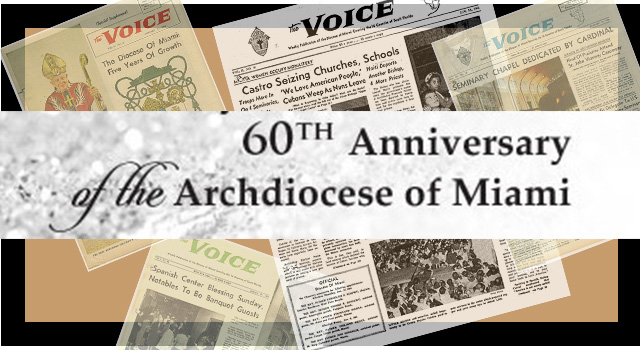
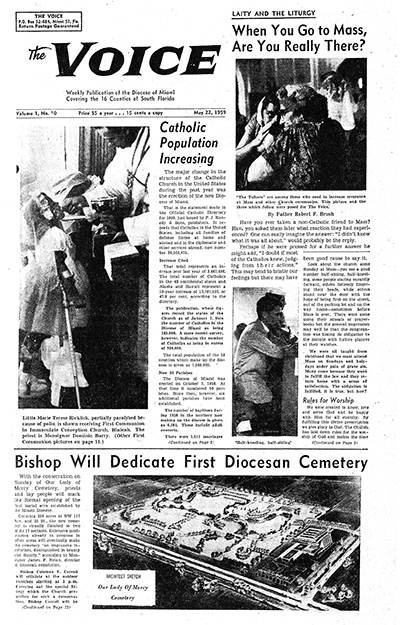
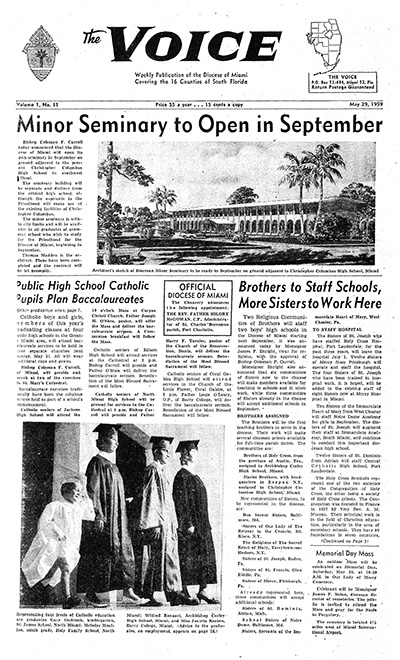
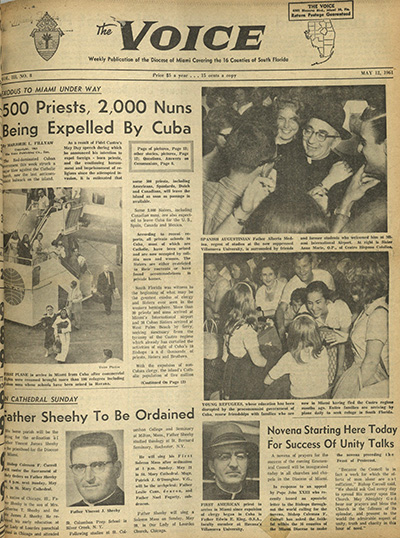
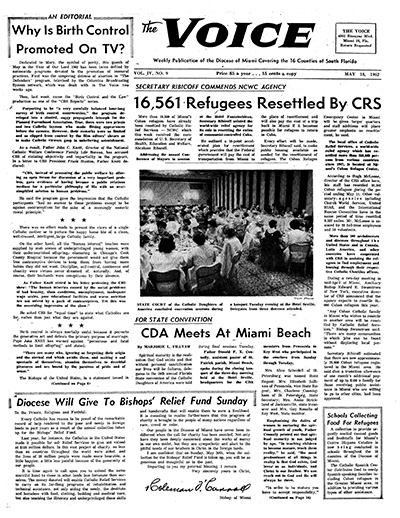
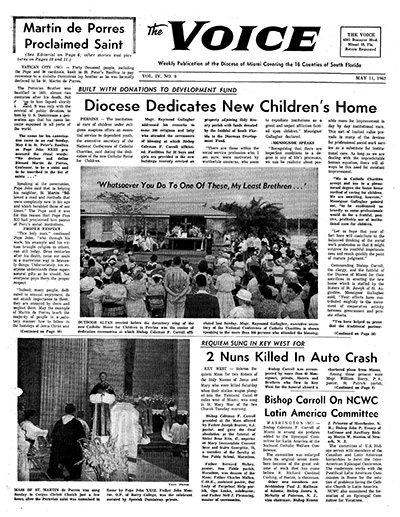
_05_mia_Haiti_05-10-1963w_1527016611.jpg)
